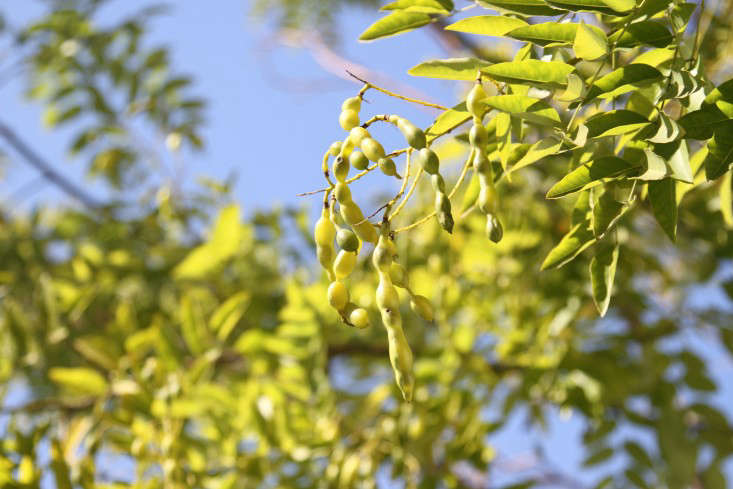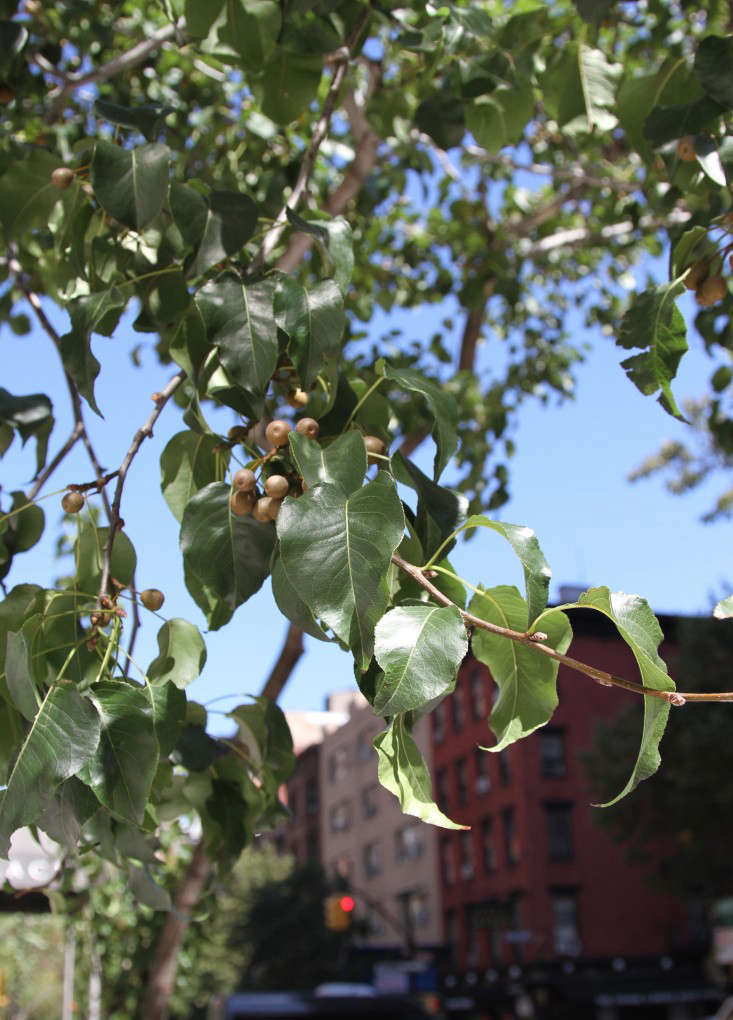Pay a bit of careful attention and it’s easy to become enamored by the scrappy bits of the natural world surviving in the middle of the concrete jungle. Remodelista contributor Margot and I have been bonding over our collective nerdiness when it comes to identifying city plants. She regales me with stories of the weeds she collects on walks with her dog, and I’ve been wishing I could better identify the tree branch she recently brought me from the Bronx.
I decided to up my tree-identification game with a class. There are apps galore for identifying leaves, but I wanted to do a little bit of old-fashioned leaf-peeping with an expert on city trees. Lisa Nett studied forestry at University of Wisconsin, but these days she’s helping New Yorkers get acquainted with the green giants among us. Lisa runs classes through the Brooklyn Brainery (host to all manner of fascinating classes for curious city folk), and I purchased a ticket for $10. On yesterday’s glorious fall day, I packed a notebook, and a camera, and had myself an extended lunch break with a 45-minute tree tour around Union Square Park.
Photographs by Erin Boyle.
Above: First things first: Can you identify the bright green trees lining Union Square?
Above: They’re Japanese pagoda trees (Sophora japonica) and they’re identifiable in this season by the bright green seed pods hanging heavy off branches all over the city.
Above: Next, Lisa demonstrated how to identify the leaves of a red oak (Quercus rubra)–nope, they’re not red–but they have a broad leaf with shallow lobes. Acorns dotting the ground are another clue.
Above: This willow oak (Quercus phellos) has leaves that look more like a water-loving weeping willow, but tiny acorns give away the oak identification. Lisa explained that the willow oak went through a particularly fashionable era in the city, and as a result the city parks department planted tons of them. Keep your eyes peeled.
Above: Tiny pear-shaped fruit on the Callery pear (Pyrus Calleryana) help ID the tree in this season. In early spring, bright white flowers do the trick. City trees are selected for parade in the city’s sidewalks for a variety of reasons: for diversity of species to avoid the spread of disease; visual variation; and tolerance of environmental factors including air pollution, cramped living quarters, and the daily assault of city life. Callery pears are particularly resilient.
Above: A fellow class member was savvy and drew quick sketches of the leaf types in her notebook for future reference.
Above: Fruit and flowers and leaves are helpful for identifying trees, but what happens after they’re all gone for the season? Lisa helped us ID a Japanese Zelkova (Zelkova serrata) using the bark. The reddish horizontal lines on the silvery bark are called lenticels. All trees have lenticels to help them breathe, but they’re particularly pronounced on this tree and a sure giveaway.
Above: Redbuds (Cercis canadensis) are some of my favorite spring trees, with bright purple flowers that seem to form from nowhere along the branches. When Lisa identified these heart-shaped leaves as belonging to the same tree, I realized I wouldn’t have been able to identify the tree without its colorful spring wardrobe. In a few weeks, the leaves will turn bright red. Fall valentine, anyone?
Check Lisa’s Brooklyn Brainery page to sign up for future classes and follow her finds on The Tree Seen.
Get a closer look at city trees in New York City of Trees.














Have a Question or Comment About This Post?
Join the conversation